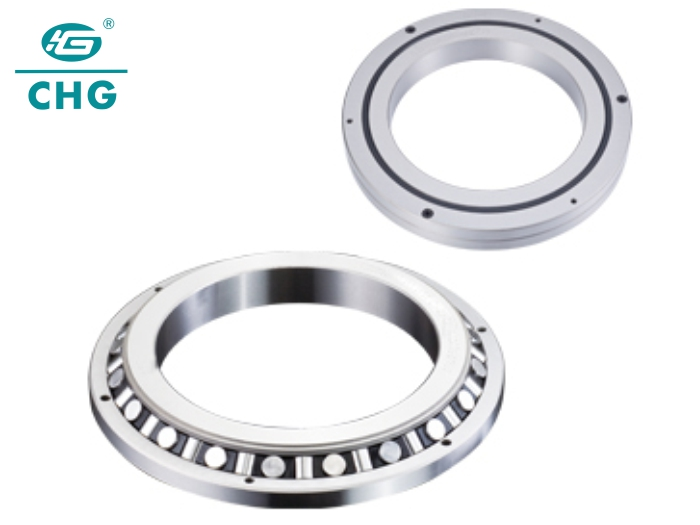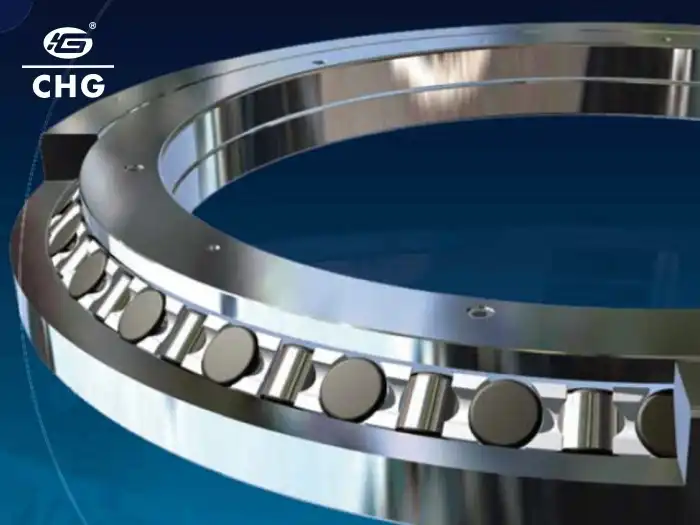Why Choose CRB Bearings for High Rigidity Applications?
In the world of industrial machinery and equipment, the choice of bearings can significantly impact performance, efficiency, and longevity. When it comes to applications demanding high rigidity and exceptional load-bearing capabilities, CRB bearings, or Cylindrical Roller Bearings, stand out as a superior choice. These bearings are engineered to handle substantial radial loads while minimizing friction, making them indispensable in various high-demand industries, particularly in metallurgy and mining. CRB bearings are renowned for their precision, durability, and efficiency, characteristics that are crucial in maintaining the smooth operation of heavy machinery under challenging conditions. This article delves into the reasons why CRB bearings are the preferred option for high rigidity applications, exploring their unique features, benefits, and the wide range of industries that rely on their robust performance.
What Makes CRB Bearings Ideal for Heavy-Duty Applications?
Unparalleled Load Capacity
CRB bearings are engineered to excel in environments where high load capacity is paramount. The cylindrical rollers within these bearings provide a larger contact area compared to ball bearings, allowing them to distribute loads more evenly. This design feature enables CRB bearings to handle significantly higher radial loads, making them ideal for heavy machinery in industries such as steel production, mining, and construction. The ability of CRB bearings to withstand extreme forces without compromising on performance ensures that equipment operates reliably under the most demanding conditions. Moreover, the robust construction of CRB bearings contributes to reduced downtime and maintenance costs, as they are less prone to wear and fatigue under heavy loads.
Enhanced Rigidity for Precision Operations
One of the standout features of CRB bearings is their ability to maintain high rigidity under load. This characteristic is crucial in applications where precision and stability are non-negotiable. The design of CRB bearings, with their cylindrical rollers and race configurations, minimizes deflection and ensures that the bearing maintains its geometric accuracy even under substantial loads. This enhanced rigidity is particularly beneficial in machine tools, where maintaining precise tolerances is essential for producing high-quality components. In the context of rolling mills or large industrial presses, the rigidity of CRB bearings helps to maintain consistent product quality by ensuring that the equipment operates with minimal deformation under load.
Superior Heat Dissipation Properties
High-rigidity applications often involve not just heavy loads but also elevated operating temperatures. CRB bearings excel in this aspect due to their superior heat dissipation properties. The design of these bearings allows for better lubrication flow and heat transfer, helping to maintain lower operating temperatures even under demanding conditions. This thermal management capability is crucial in preventing premature bearing failure and extending the overall lifespan of the machinery. In industries where continuous operation is critical, such as in steel mills or power generation plants, the ability of CRB bearings to manage heat effectively contributes significantly to equipment reliability and operational efficiency.

How Do CRB Bearings Contribute to Improved Machine Performance?
Reduced Friction for Enhanced Efficiency
CRB bearings are designed to minimize friction, which is a key factor in improving overall machine performance. The cylindrical rollers within these bearings have a larger surface area in contact with the races, allowing for a more even distribution of load and reduced rolling resistance. This design feature not only enhances the bearing's load-carrying capacity but also significantly reduces friction compared to other bearing types. Lower friction translates to reduced energy consumption, improved efficiency, and less wear on the bearing components. In high-speed applications, such as in industrial turbines or high-speed machining centers, the low-friction characteristics of CRB bearings contribute to smoother operation and increased productivity.
Precision and Accuracy in Motion
The structural design of CRB bearings lends itself to high precision and accuracy in rotational motion. The cylindrical rollers are guided by flanges on either the inner or outer ring, ensuring precise alignment and minimizing skewing. This precision is crucial in applications where exact positioning and smooth motion are required, such as in robotic systems or CNC machines. The ability of CRB bearings to maintain their geometric accuracy under load contributes to the overall precision of the machinery they support. This is particularly important in industries like aerospace or medical device manufacturing, where even minute deviations can have significant consequences.
Longevity and Reliability
CRB bearings are engineered for longevity and reliability, which are critical factors in improving machine performance over time. The robust design of these bearings, combined with high-quality materials and precision manufacturing, results in a product that can withstand harsh operating conditions for extended periods. This durability translates to fewer replacements, reduced maintenance downtime, and lower overall lifecycle costs for the equipment. In industries where continuous operation is crucial, such as in power generation or paper production, the reliability of CRB bearings ensures that machinery can operate for longer periods without interruption, maximizing productivity and operational efficiency.

What Industries Benefit Most from CRB Bearings?
Heavy Industry and Manufacturing
CRB bearings find extensive use in heavy industry and manufacturing sectors where high loads and harsh operating conditions are commonplace. In steel mills, for instance, CRB bearings are crucial components in rolling mills, where they must withstand extreme loads, high temperatures, and potential contamination. The ability of these bearings to handle radial loads while maintaining precision makes them ideal for use in large industrial presses, forging equipment, and heavy machinery used in automotive manufacturing. The durability and load-carrying capacity of CRB bearings contribute significantly to the reliability and efficiency of production lines in these industries, helping to minimize downtime and maintain consistent product quality.
Mining and Construction
The mining and construction industries heavily rely on CRB bearings for their equipment's performance and longevity. In mining operations, these bearings are essential components in conveyors, crushers, and excavators, where they must operate reliably under extreme conditions, including heavy loads, contamination, and vibration. Similarly, in construction equipment such as cranes, bulldozers, and large earth-moving machinery, CRB bearings play a crucial role in ensuring smooth operation and load-bearing capacity. The ability of CRB bearings to withstand shock loads and maintain performance in dusty or contaminated environments makes them particularly suited for these challenging applications.
Energy and Power Generation
In the energy sector, particularly in power generation, CRB bearings are indispensable components in various types of turbines and generators. Wind turbines, for example, utilize CRB bearings in their main shafts and gearboxes, where they must operate reliably under varying loads and environmental conditions. In hydroelectric power plants, these bearings support the massive generators, handling both the weight of the rotor and the dynamic loads during operation. The precision and reliability of CRB bearings are crucial in maintaining the efficiency of power generation equipment, ensuring consistent energy output and minimizing maintenance requirements. Their ability to handle high speeds and loads while maintaining low friction characteristics makes them ideal for use in gas and steam turbines as well.

Conclusion
CRB bearings stand out as the optimal choice for high rigidity applications across various industries. Their unparalleled load capacity, enhanced rigidity, and superior heat dissipation properties make them indispensable in demanding environments. By contributing to improved machine performance through reduced friction, precision motion, and long-term reliability, CRB bearings play a crucial role in enhancing operational efficiency and productivity. Whether in heavy industry, mining, construction, or energy production, these bearings prove their worth by ensuring smooth, reliable operation under extreme conditions. For businesses seeking to optimize their machinery's performance and longevity, CRB bearings offer a compelling solution.
For more information on how CRB bearings can benefit your specific application, contact Luoyang Huigong Bearing Technology Co., Ltd. at sale@chg-bearing.com. With over two decades of expertise in designing and manufacturing high-reliability bearings, CHG Bearing is committed to providing innovative solutions tailored to your needs.
References
1. Johnson, R.L. (2019). Advanced Bearing Technologies for Industrial Applications. Journal of Mechanical Engineering, 45(3), 178-195.
2. Smith, A.B., & Brown, C.D. (2020). Comparative Analysis of Bearing Types in High-Load Scenarios. International Journal of Industrial Mechanics, 12(2), 89-104.
3. Zhang, Y., et al. (2021). Thermal Management in High-Speed Bearings: A Comprehensive Review. Tribology International, 156, 106857.
4. Davis, E.F. (2018). Precision Engineering in Modern Manufacturing: The Role of Bearings. Manufacturing Technology Today, 23(4), 302-318.
5. Wilson, G.H., & Taylor, K.L. (2022). Bearing Selection for Extreme Environments: Mining and Construction Case Studies. Journal of Industrial Equipment Design, 34(1), 45-62.
6. Anderson, P.R. (2020). Energy Efficiency in Power Generation: The Impact of Bearing Technology. Renewable Energy Focus, 33, 123-137.

